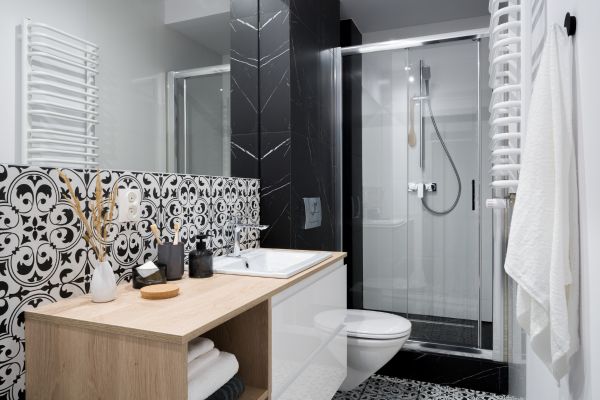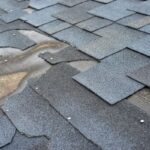Let’s be real — we don’t often think about how much water we use in the bathroom. Between showers, flushing toilets, brushing teeth, and cleaning, it’s one of the most water-hungry spots in the house. But the thing is, saving water here doesn’t just help the planet — it saves you money too. So if you’ve been looking for practical, real-world water saving bathroom tips that actually work, you’re in the right place.
Why Water Conservation Starts in the Bathroom
Think about it. Every time you take a long, hot shower or let the faucet run while brushing your teeth, gallons of water go straight down the drain. Bathrooms account for nearly 50% of a household’s total water use. That’s massive. By tweaking a few habits and upgrading a couple of fixtures, you can make a real difference without giving up comfort.
Water is becoming a more limited resource, and we’re all feeling the pinch — higher bills, stricter drought regulations, and growing awareness about our environmental footprint. That’s why now, more than ever, adopting water saving bathroom tips isn’t just a nice idea. It’s essential.
Take Shorter, Smarter Showers
You’ve heard it before — shorter showers save water. But let’s make it more practical. Set a timer. Make it a game. Challenge yourself to finish before your favorite song ends. You’d be surprised how much water you can save by trimming just a few minutes.
Also, switch to a low-flow showerhead. These are designed to reduce water use without sacrificing pressure. You still get that relaxing shower experience, but you’ll use nearly half the water. That’s a win-win.
And if you really want to level up your water saving bathroom tips routine, turn off the water while you lather your hair or shave. It may sound small, but those few minutes add up big time over the course of a year.
Fix Leaky Faucets and Drips ASAP
A dripping faucet might seem harmless — just a tiny drip, right? Wrong. A single leaky tap can waste hundreds of gallons of water per month. You might not notice it day to day, but your water bill sure will.
The good news? Fixing leaks is usually a simple DIY project. Tighten connections, replace worn washers, or call a plumber if you’re not confident. Even better, choose water-efficient faucets that use aerators. These mix air with water, giving you great flow while cutting down usage.
This is one of those water saving bathroom tips that’s ridiculously easy but often overlooked.
Upgrade to a Water-Efficient Toilet
Here’s a fact that might surprise you: toilets are the single biggest water users in most homes. Older models can use up to 7 gallons per flush. Newer low-flow or dual-flush toilets? Less than 1.6 gallons. That’s a huge difference.
If replacing your toilet isn’t in the budget, there are simple hacks you can try. Put a filled water bottle or a toilet tank bag inside the tank. It displaces water, meaning less is used per flush. Just make sure it doesn’t interfere with the flushing mechanism.
And yes, it might sound awkward, but if it’s just a small flush situation — you know the saying, “If it’s yellow, let it mellow.” It’s a classic water saving bathroom tip that’s been around for decades for a reason.
Turn Off the Tap When Not in Use
It’s such a small habit, but it makes a massive difference. Turning off the tap while brushing your teeth, washing your face, or scrubbing your hands saves gallons every single day.
You don’t need water gushing the entire time. Wet, lather, rinse — simple. If you brush twice a day and let the tap run, you could be wasting over 2,000 gallons of water a year. Let that sink in (no pun intended).
Be Smart About Bath Time
Ah, the luxury of a warm bath. No one’s saying you should never take one. But do it mindfully. Filling up a bathtub uses about 70 gallons of water, compared to around 20 for a short shower. So maybe save those baths for self-care Sundays or stressful days when you really need them.
When you do run a bath, don’t fill it to the brim. Half or three-quarters full is usually enough. And check the plug for leaks — even a small drip means more hot water (and money) wasted.
Install a Greywater or Recycling System
If you’re serious about sustainability, a greywater system could be your next step. These systems collect water from sinks, showers, and tubs, filter it, and reuse it for things like toilet flushing or garden watering. It’s a bigger investment upfront, but it pays off over time — both financially and environmentally.
Even if a full system isn’t possible, you can still collect used water manually for cleaning tasks. For instance, the water you use while waiting for the shower to heat up can be caught in a bucket and used to mop floors or water plants.
Choose Eco-Friendly Bathroom Products
Here’s a subtle but powerful water saving bathroom tip: your choice of cleaning and hygiene products matters. Some soaps, shampoos, and cleaners are packed with harsh chemicals that can contaminate wastewater and make recycling harder. Go for biodegradable, low-chemical products instead.
You can even try DIY cleaning solutions — a mix of vinegar, baking soda, and lemon works wonders. It’s better for your drains and the planet.
Encourage Everyone in the House to Join In
Water conservation works best when everyone’s on board. Talk to your family, roommates, or guests about these water saving bathroom tips. Make it fun. Track your water bill and see how much it drops over time. You could even challenge your household to beat last month’s total.
The key is consistency. It’s not about being perfect; it’s about building small, sustainable habits that stick.
The Bigger Picture: Why It All Matters
Saving water isn’t just about lower bills or cleaner consciences. It’s about protecting a resource that’s getting scarcer every year. Every drop we save contributes to a more sustainable future. Think about it — the water we waste today could be the water someone else needs tomorrow.
So whether it’s fixing that annoying leak, upgrading your fixtures, or just being mindful in daily routines, every action counts. These water saving bathroom tips might seem small on their own, but together, they create real impact.
Final Thoughts
At the end of the day, water conservation starts with awareness — and action. You don’t need fancy equipment or major renovations to make a difference. Just a few changes here and there can help you build an eco-friendlier, more sustainable home.
So next time you step into the bathroom, take a second to think: Can I do this a little smarter? Chances are, the answer’s yes. And that’s where change begins.




